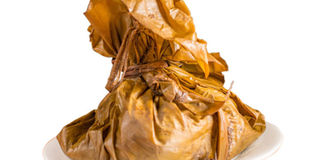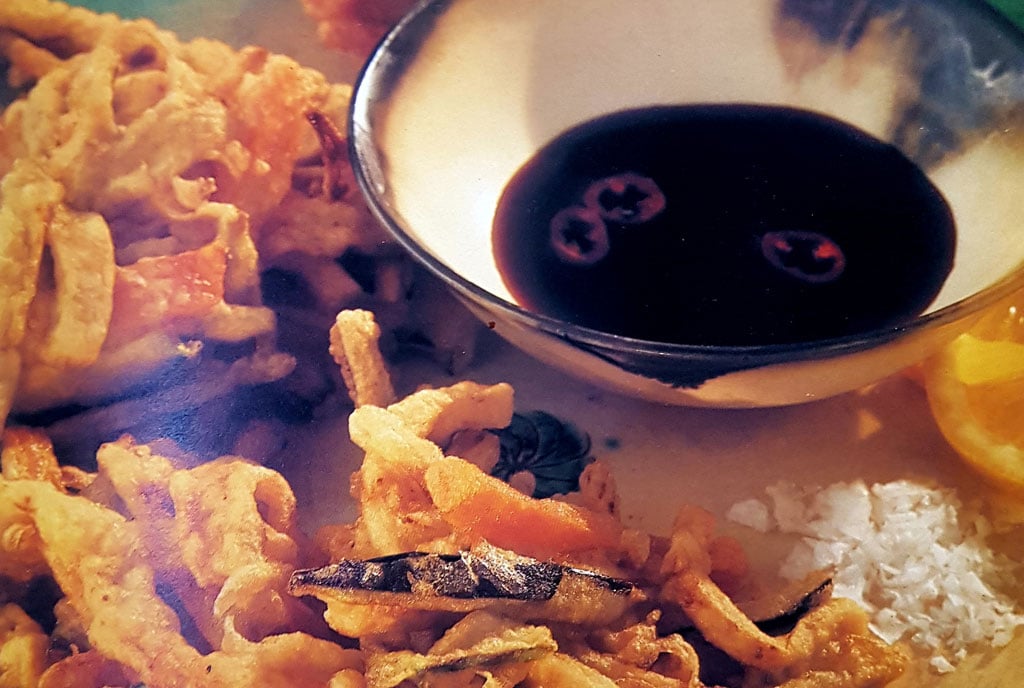Food that has typified Uganda since independence

Luwombo historically emanates from Buganda. The traditional method of cooking is done by steaming the chicken or meat in a wrapped special banana leaf which are available from local markets.
What you need to know:
- Indulge today. As we celebrate 60 years of independence, we ought to appreciate the food that says Uganda. A Kadumukasa Kironde II presents dishes that define Uganda’s culinary landscape.
Growing up in Uganda in the late 1950s and early 1960s restaurants, as we know them today, were few and far in between. Incidentally, the population at Independence stood at 7.2 million with most of the action centred on Kampala, Entebbe (which was then the administrative capital of the country) , Jinja and Masaka to some extent.
Those days, the locals used to have their own Ugandan eateries which were called ‘woteli’ being a derivative from the English word hotel. These establishments were situated in the peri-urban outskirts of Kampala in such areas as Bwaise, Nakulabye, Katwe, Wandegeya, and Makerere.
The menu in these places was usually Ugandan food with emphasis on Buganda fare viz matooke, yams, rice, sweet potatoes, cassava, meat and chicken sauces plus greens. Posho and millet were not commonly served, but some establishments would offer them for people from northern Uganda who would demand their staple.
These local eateries were unpretentious with no regard for fancy interior décor or comfortable seating. Plastic chairs were unavailable and the norm for seating would be a bench and form, somewhat akin to the seating that obtains in village schools.
For the bazungu and burgeoning Ugandan high ranking government officials, Uganda Club was the place of choice as well as hotels such as the Lake Victoria Hotel, The Imperial Hotel, Speke Hotel which I recall used to have a restaurant called Hacienda Grill (well- known for steaks and chicken skewers as well as lamb.
It was popular in the evenings and weekends. My father was a cabinet minister from 1955 until the dawn of Independence at which point he became Uganda’s first ambassador to the UN and the US.
I still have distant memories of lunch on Sunday with the family at the Lake Victoria Hotel in Entebbe. The food was a set menu and was always preceded by a soup followed by a choice of fish fillet or steak and potatoes, vegetables and pudding.
Our father being a teetotaler, alcohol was never served. Soft drinks would be soda and orange squash. Adults would drink beer and as for spirits, brandy and whisky were popular.
When we speak of the middle class Ugandans regarding dining out, at the time of Independence there were three eating establishments which were: City Bar on Kampala Road which is no longer around and has been replaced by a high rise building known as Thobani Center. My suspicion is that they were the former owners of City Bar. Uhuru Restaurant, Nakivubo and Nalongo’s in Katwe which had opened in the late 1940s.
Today’s dining out landscape offers a wide variety of dining establishments offering different ethnic runners far too numerous to mention in this article but would include Indian, Chinese, Italian, continental and naturally Ugandan. Look at the foods that typify Uganda.
Luwombo
This specialty of Uganda historically emanates from Buganda. The traditional method of cooking is done by steaming the chicken or meat in a wrapped special banana leaf which are available from local markets.

Traditional way of serving luwombo would be for the food such as matooke, yams or whatever to be partaken from the leaf in which it was cooked.
Method
- Have ready a charcoal stove or a barbecue grill that is alight but fiery hot.
The charcoal embers should be barely glowing and spread some of the banana peels over it and then grill the chickens (whole) until they become a nice golden brown. When done, remove and set aside.
2. In the meantime, drop the tomatoes in some boiling water and allow them to boil for a few minutes, remove and remove the skin and mash them with your fingers until coarsely pulverised. Heat a little cooking oil and add the chopped shallots and gently fry them until translucent. Add the garlic (leave two teaspoons for later use) and continue frying for some minutes before adding two thirds of the tomatoes and your dressed chicken and the tomato paste.
- Cook over low heat and allow to gently simmer. Add some salt and pepper, the butter , bay leaf as well as chicken stock.
- Peel the Irish potatoes and quarter them and set them aside for later use. Heat some of the oil and add the chopped onions and fry them over low heat until they become translucent. Add the garlic and fry for another couple of minutes before adding the remaining tomatoes, half the paste and salt and pepper.
5. Add the chopped potatoes and bring to a boil and simmer gently covered for about ten minutes. As you are cooking the sauce , taste and correct the seasoning.
When you are ready to cook the luwombo, stuff the two chickens with the potatoes and truss them with a what we call kayi and get hold of a kibo or a small shallow bowl large enough to accommodate one chicken.
- Place the luwombo leaf into a bowl, the leaf ought to have an inner leaf and then place the chicken inside the leaf with the leaf forming a cup-like effect and make certain that the drumsticks are facing up and spoon about a third of the sauce into the leaf.
- Hold the both ends of the banana leaf and fold it together and then carefully tie the leaf with a string or kayi being careful not to pierce the leaf.
- Place the chicken luwombos in a large saucepan that has been lined with a few stems from a bunch of matooke. Otherwise, invert a perforated metal strainer or a colander that will enable the chickens be placed while being steamed.
- Tuck in some banana leaves over the luwombo and tie them with a string or banana fibre.
Malakwang
Malakwang are a sour type of vegetables that are green and red.

Ingredients
3 to 4 clusters of malakwang
200g groundnut paste
200g simsim paste
Salt and pepper to taste
2 tumpecos of water or stock
Method:
- Separate the leaves from the stem and wash them well and place in a sauce pan.
- Place the greens in half the water and bring to a boil covered for about 10 minutes when they should be done.
- Drain the water and add the sim sim and groundnut paste and mix until they are well blended and then add the rest of the water. As they are cooking add salt and pepper and just before serving, taste and correct seasoning and serve at once.
Groundnut sauce
Variations on this popular sauce are to be found all over Africa with the key ingredient being peanuts in any form as long as they are pounded. If you are living abroad and the Ugandan groundnuts are not available, peanut butter works well with either smooth or crunchy.
Ingredients
1 small dried fish coarsely chopped with the bones removed
4 to 5 cups water
2 teaspoons vegetable oil
2 onions chopped
4 tomatoes chopped
2 teaspoons cayenne pepper (optional)
1 teaspoon good quality curry powder
1 cup groundnut paste
Salt to taste
Method:
- Soak the dried fish in 2 cups of water for about an hour or until it becomes soft. Drain and pat dry
- In a large saucepan fry the onions in the oil until brown, about 5 minutes. Add the fish, cayenne pepper, curry powder, the remaining water, groundnut paste and simmer uncovered for about an hour. When the sauce is almost ready, add the salt and before serving taste and correct seasoning.
Eshabwe
The best type of ghee for this recipe would be clean and the kind that has not been boiled and must not have any remains of whey.
Ingredients
150g ghee
6 tablespoons of warm water
½ teaspoon of powdered rock salt
¼ teaspoon of ordinary salt
Method
- Have ready a clean dry bowl and put the ghee inside and dissolve the salt in half the water.
- Beat the ghee until smooth and slowly and carefully add the salted water making sure that you beat the ghee thoroughly.
- While you are beating the ghee, add a little salt at a time until it turns white, thick and smooth and you will notice that the volume is gradually increasing and in the end it should have doubled. In case it shows signs of curdling, add a bit more salt with lukewarm water. In case it becomes too thick, add more lukewarm water and mix well.
Katogo Braised Matooke with Vegetables
![]()
Ingredients:
20 very mature peeled fingers of matooke
(The more mature the better the outcome)2-Carrots chopped
2 cloves crushed garlic
2 medium sliced onions
A few sprigs of chopped cilantro
1 sliced courgette¼ kilo fresh garden peas ½ teaspoon black pepper
1 chopped celery stalk 1 large sliced green pepper
10-chopped garden eggs (entula) Vegetable oil5 medium size chopped and pureed tomatoes
4 tablespoons tomato paste
Salt to taste
4 tablespoons gheeTwo bunches washed and chopped dodo
1 bay leafMethod:
Put the matooke into a heavy saucepan and then add water and bring to a boil. Do NOT add salt. Reduce the heat and let it simmer gently for at least an hour; the longer the better. In the meantime, heat some vegetable oil in a medium size saucepan and fry the garlic and onions and then add the rest of the vegetables including the salt and pepper. Add a bit of stock or water and simmer gently over low heat for forty-five minutes. Correct the seasoning. As soon as the matooke is done drain the water and reserve some of it in case you need to add a bit more to the vegetable mix. Immediately after draining the matooke add the vegetables and the return your saucepan to the cooker. Once it begins to boil reduce the heat at once and cook for another half hour. Serve hot.





